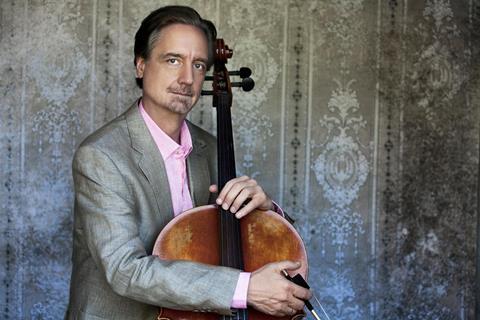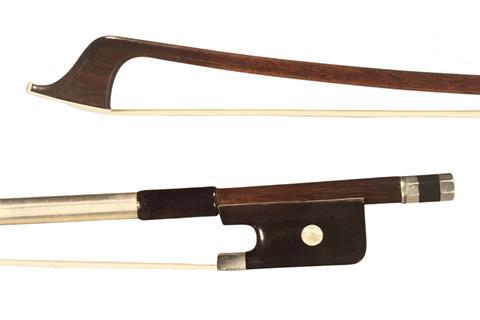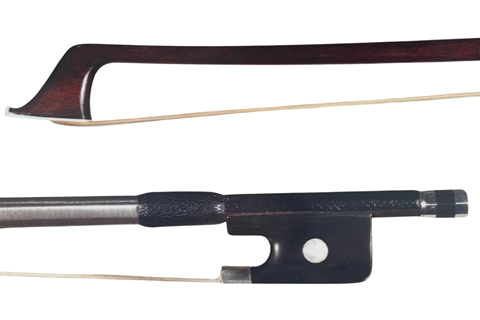From 19th-century French bows to modern carbon fibre, David Finckel outlines why each of his seven bows has a time and place in his music making

Discover more lutherie articles here
David Finckel’s seven bows
Dominique Peccatte c.1850, Mirecourt, France
Étienne Pajeot, c.1825, Mirecourt, France
Louis Joseph Morizot, c.1925, Mirecourt, France ‘ex-Berlinsky’
Ole Kanestrom, 2010, Port Townsend, WA (commissioned by David Finckel)
Yanbing Chen, two bows, 2013 made in China of carbon fibre, Cleveland Violins
Yanbing Chen, one bow, 88 grammes, made in China of carbon fibre, Cleveland Violins (commissioned by David Finckel)
Throughout a career that now spans close to 60 years I have played on many bows, some single ones for a number of years, others for shorter stretches. Recently, I have changed my approach to the bow and I am now happier than ever. I now rotate between the seven bows listed above more or less as the spirit moves me. This kind of polygamy is not very practical when comes to the cello itself, but I find that this array of bows allows me a sensation that I myself am actually changing and evolving, and that I sound different from day to day and concert to concert.
This array of bows allows me a sensation that I myself am actually changing and evolving
I have two bow holders in my cello case. Before I leave for a concert I usually select two bows that I think might enhance my playing for a particular performance. It might have to do with the composers I’m playing, the style of the repertoire and its technical demands. My decision might be affected by the size of the hall, and the people I’m playing with and how their instruments sound.
I have different attachments to the bows above for varying reasons. In the case of the Morizot, it belonged to a hero of mine, the great cellist Valentin Berlinsky who played in the Borodin Quartet for many years. It was his only bow, and his only instrumental possession: the State owned his cello. This bow played at the funerals of both Stalin and Prokofiev, recorded the Shostakovich Quartets and dozens of other works, and traveled the world with Berlinsky on the Quartet’s famously relentless tours during which they played record-breaking numbers of concerts. It was sold to me by his daughter, who thought it should go to a quartet player. At the time, I was still cellist of the Emerson Quartet.
The carbon fibre bows are favourites of mine. Made by a family of instrument makers from Shanghai, these bows are rock-solid dependable. They are strong to the point of being indestructible and are so evenly balanced you can do almost anything with them. They feel like a fine tool in my hand, and from one to the next perform the same way. The 88-gramme model I special-ordered, as I like a super heavy bow for some music, and Cleveland Violins, in the hands of Yanbing Chen, delivered a superb product.
Ole Kanestrom is one of the most renowned makers from the town of Port Townsend in Washington State. I had tried, and heard his bows, and I loved them. He made this one especially for me, and it combines the freshness and strength of the carbon bows with the aesthetic appeal of the wooden ones. It is a beautiful stick to which I return often.

When I was much younger, I owned a few French bows, but not ones on the level of this Pajeot and Peccatte. They are different animals. In the first place, they are old, each well more than a century, and like an instrument, when something comes to you from another age, it brings along its own history. I swear I can hear it in the sound, and my cello does not sound the same when I play them. It is as if the instrument is playing with a voice from the past. Also, as they are crafted at the highest level, they have their own way of playing – not mine, theirs – which I have had to teach myself to learn. These bows are teaching me how to play them. And that is a magical and wonderful experience.

All in all, I’m lucky to have such a collection and to have found a new life with my cello and its accompanying bows, one which I didn’t realise was possible until recently. My bows are simply another reason I am so grateful to be a musician.
Bow photos courtesy David Finckel.
Read: Why I only make violas: luthier Gabrielle Kundert
Read: From Stradivari to Zygmuntowicz: the instruments of Music@Menlo
Discover more lutherie articles here
An exclusive range of instrument making posters, books, calendars and information products published by and directly for sale from The Strad.
The Strad’s exclusive instrument posters, most with actual-size photos depicting every nuance of the instrument. Our posters are used by luthiers across the world as models for their own instruments, thanks to the detailed outlines and measurements on the back.
The number one source for a range of books covering making and stringed instruments with commentaries from today’s top instrument experts.
The Canada Council of the Arts’ Musical Instrument Bank is 40 years old in 2025. This year’s calendar celebrates some its treasures, including four instruments by Antonio Stradivari and priceless works by Montagnana, Gagliano, Pressenda and David Tecchler.












































No comments yet